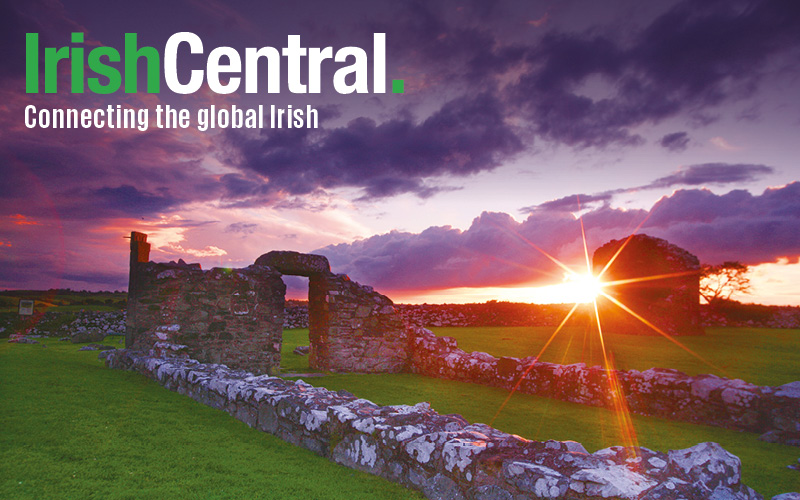Though not Gaelic and sometimes found in England of non-Irish origin, Joyce may certainly be regarded as a true Irish name, and more particularly a Connacht one. The first Joyce to come to Ireland of whom there is an authentic record was Thomas de Jorse a Welshman, who in 1283 married the daughter of Turiogh O’Brien, Prince of Thomond and went with her to County Galway; there in Iar Connacht, which runs over the Mayo border, they were at first aligned with the O’Flahertys but they went on to establish themselves so firmly and so permanently that the territory they inhabited became known as Joyce’s Country. Statistics of births, deaths and marriages show that this is still their stronghold: over eighty per cent of the Joyces in Ireland come from Galway or Mayo.
Derived from the Brehon personal name “Iodoc,” which is a diminutive of iudh meaning lord, the name was adopted by the Normans in the form of Josse. While some scholars believe the name derived from the French Joice, which means joy, a multitude of names developed in Ireland and England from Josse, including Joce, Joass, and Joyce.
The Joyce coat of arms displays two eagles in tribute to the special relationship the bird has to the clan. Legend has it that while William Joyce was traveling in Europe during the Crusades he was captured by Saracens and sold into slavery to a goldsmith in Algeria. He escaped and was led by an eagle to the location of a buried treasure. After returning home, he used the riches from this treasure to build the walls of Galway City. It is believed that it was William who designed the Claddagh Ring, one of Ireland’s most enduring symbols. He is said to have learned his silversmithing trade when he was held captive in Algeria. Later, William Joyce’s granddaughter Margaret Joyce, or Margaret na Drehide (of the bridges), built bridges throughout Connaught, which includes the modern counties of Mayo and Galway. Margaret also encountered an eagle, one that dropped a jewel into her lap.
Many of the Joyces became successful merchants and interspersed themselves throughout the Fourteen Tribes of Galway. The clan also produced many fine scholars, historians, linguists, and folklorists.
The Joyce clan also produced a most infamous member. During WWII, William Joyce, also known as Lord Haw Haw, was the voice on the radio that embraced fascism. Born in New York City but raised in County Mayo, he was eventually captured by the Allies, convicted of treason, and hanged.
Without a doubt the most famous Joyce is author James Joyce, who was born in Dublin on February 2, 1882 (d. Jan. 13,1941). A poet, novelist, playwright, and author, Joyce's works include: Dubliners, Portrait of the Artist as a Young Man, Ulysses, and Finnegans Wake.
June 16 marks the annual celebration of Bloomsday when Ulysses’ Leopold Bloom began his modern-day odyssey through the urban landscape of Dublin in 1904. Joyce chose this day because it marked his first outing with Nora Barnacle, the Galway woman who became his wife.
Other Joyces in the publishing business include novelist Brenda Joyce who specializes in mystery and romance novels and William Joyce, author and illustrator, whose illustrations have appeared on many New Yorker covers. In entertainment, Alice Joyce (1890-1955) made a great impact in the silent film era. She performed with Clara Bow in the 1926 film Dancing Mothers and appeared in close to 200 films. Unfortunately, her career dwindles with the rise of sound in movies. Michael Joyce (1951) is the founder of Cinema Production Company Services Incorporated, a Los Angeles-based movie visual effects company. He has worked as the Innovative Miniature Supervisor behind movies such as Godzilla, Independence Day, Cliff Hanger, Terminator 2: Judgement Day and Die Hard 4.
Joyces in the sports world are represented by Matt Joyce (1972), an offensive tackle who played for ten seasons in the NFL until retiring in 2004, and Matt R. Joyce (1984), a Major League baseball outfielder for the Tampa Bay Rays. In the world of cricket, former England batsman Ed Joyce (1978) is playing for his native Ireland in the 2011 World Cup.
And in politics, Irish-American State Senator Brian A. Joyce (1962) is serving his seventh term in Massachusetts. He said of his Irish ancestors: “The Joyces have come a long way since leaving Claremorris, County Mayo 100 years ago, and much of our success is due to the values and work ethic brought by my grandfather from Ireland.”




Comments